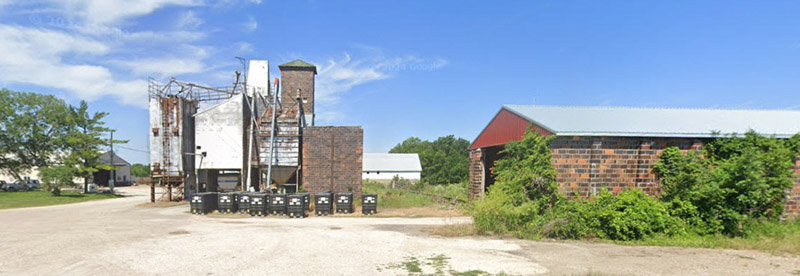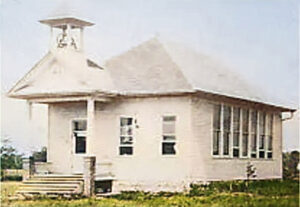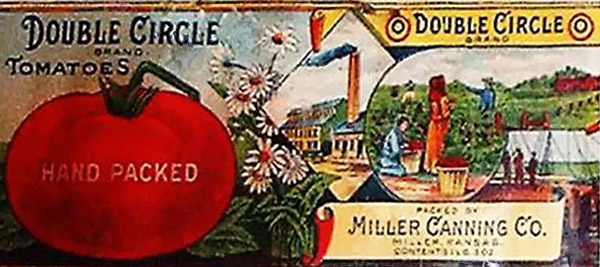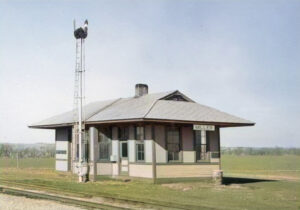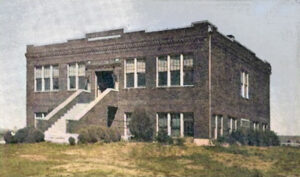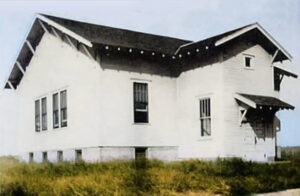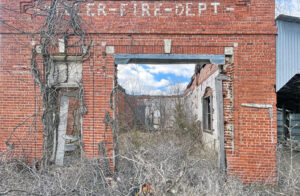Miller, Kansas, is an extinct town in Waterloo Township of northeast Lyon County.
It was established in 1868 when Irishman Thomas Condell, from Illinois, purchased over 5,000 acres of land that would later become the Miller Ranch. After purchasing the land, he sent his sons to live on it and care for the cattle. A few years later, Condell sent his son with a large group of cattle to sell at the market in Kansas City. However, his son sold the cattle and ran off with the money. Condell was not only heartbroken that his son would do such a thing, but he also took a serious financial hit. Thomas then came to Lyon County to live on his land and manage the sprawling ranch, but he had lost a lot of his drive and interest in ranching. In 1877, the ranch was mortgaged. Thomas Condell died in Osage County, Kansas, on October 11, 1880, at the age of approximately 72.
His mortgage on the ranch was paid off in 1881, a year after Condell died. In 1882, the Condell heirs sold the land to brothers William and Hiram Miller. Hiram Miller was a Kansas politician, banker, and ranchman who had many ideas for the ranch. In the next years, the Miller Ranch operation expanded to nearly 10,000 acres.
It was so big and did so much livestock shipping that when the Missouri Pacific Railroad was built through the area in 1886, a station was established at the ranch for shipments of cattle and hogs. Stock pens were built in a large area on the south side of the tracks.
By that time, the Millers had platted and recorded a townsite north of the tracks called Miller. Here was where most of the homes were established for ranch workers and their families. A post office opened on April 22, 1887.
The post office closed on December 15, 1905.
The town then began to develop, and a grocery store was established in 1906. At about the same time, School District No. 93 was formed. It was located a half-mile north of town.
By 1910, it boasted a general store, a lumberyard, express and telegraph offices, and a population of 24. That year, the Millers again filed a town plat, and lots were sold as the town got off to a good start. Other early businesses included a hardware and implement shop and a blacksmith.
In 1911, a new two-room school was constructed, featuring three classrooms.
On April 12, 1912, the Miller post office reopened.
Hiram Miller saw many of his ideas come to life before his passing on October 23, 1912. Afterward, his son, Clyde Miller, managed the ranch, although he spent much of the year in Topeka. Clyde’s son-in-law, Kenneth Miller Kline, managed the ranch in his absence. Miller’s heirs continued to operate the ranch until 1946.
An addition to the school was built in 1914. That year, Methodist Church services began and were held in the Miller school until the church building was constructed several years later.
In 1915, a lunchroom, barbershop, stores, and the Miller State Bank opened.
In 1916, a filling station was established. The same year, a boarding house used by the Miller Ranch was moved to town and became known as the Miller Hotel. A telephone office, established the same year, and the post office were both in the hotel.
Mr. and Mrs. Bill Ball ran the hotel and telephone office from 1916 to 1946. They also had a livery stable, and Mr. Ball was offered wagon services to carry heavy loads. Mrs. Ball was the postmistress from 1919 to 1922.
In 1917, the Miller Canning Company factory was built. The factory employed families in the area during a period of economic hardship. Area residents rented land from the Miller Ranch to grow tomatoes and green beans for the canning factory. By the end of September 1919, more than 24,000 cans of the “Double Circle” brand tomatoes had been preserved at the factory. Most of the 33 people employed at the factory were women. The factory was closed in 1921, and half of the building was moved to the Miller Ranch headquarters.
Miller High School was established in 1919, and the brick four-room building was located across the street from the grade school. It opened in 1920, initially serving 36 students. The Methodist Church was built that year. At that time, the town was illuminated by electricity; its residences and business buildings were well-maintained, with neat lawns and brilliant flowerbeds, and substantial cement sidewalks added to the town’s attractiveness.
Consolidations with area one-room schools began in 1923, following the Stotler District. No. 70 schoolhouse burned in 1922. Others were associated with Waterloo No. 5 in 1946, followed by Pretty View No. 51 and Pollock No. 46 in the late 1940s.
In late 1930, a fire destroyed a general store, a barber shop, and another business, while the intense heat cracked windows and blistered paint on the hotel and hardware buildings across the street.
A modernized railroad station was first used in November 1930, replacing the old depot.
The new Miller depot was destroyed on Sunday, September 6, 1931, by an east-bound Missouri-Pacific freight train. Thirteen refrigerated cars with 300-lb. blocks of ice loaded with fruits and vegetables from Colorado broke away from the middle of the train, left the track, and piled up at the station. At least one went into the station. The derailment was believed to have been caused by a dragging brake beam, as evidenced by damage found to the ties a half-mile west of the wreck. The depot was closed on that Sunday to prevent injuries, but the new station was demolished. A Ford car parked on the east side of the depot was damaged slightly by the falling depot wall; however, the driver and passengers in the car were not injured. The station agent later found his adding machine in the debris, the only usable thing left in the depot. The railroad depot was rebuilt, and the track was repaired.
The Great Depression of the 1930s halted most business development in Miller.
In 1941, the Miller Bank merged with the bank at Admire.
During World War II in the early 1940s, the U.S. military acquired approximately five square miles of land for a practice bombing range south of Miller. It straddled the Lyon/Osage County line, with the actual target area in Osage County. One of three such ranges used by the Topeka Army Air Base, crews in training located the target and dropped their practice bombs, which were typically thin metal with a 4-pound charge of black powder to create visible smoke upon impact. Aircraft targeting the range included B-25 Mitchell medium bombers, B-17 Flying Fortress, B-24 Liberator, and B-29 Superfortress heavy bombers, and an occasional P-38 Lightning, a twin-boom fighter-bomber. Navy air crews also used the range for training. It was closed after the war, and the land returned to farm and ranch use.
Due to a lack of students, Miller High School closed in 1955, and area students attended Allen. In 1957, they then attended Northern Heights.
On the morning of January 16, 1956, students heading to the grade school noticed smoke near the chimney and alerted the teachers inside and the fire department. While Emporia firefighters and locals attempted to save the burning building, students, teachers, and volunteers managed to save the tables, chairs, and other furnishings stored in the high school building. The grade school building was too badly damaged for repair. Afterward, the brick high school building was used for elementary classes until the 1970 consolidation. It has since been demolished, and a monument constructed of the school bricks now marks the site.
The acreage of the ranch varied over the years. Some of the land was sold, and Walter Porter purchased the remaining 4,900 acres in 1958. That year, the post office was closed on April 18, 1958. The Miller railroad depot also closed that year.
The Hoglund Lumber yard was one of the oldest businesses in Miller when it burned in the mid-1960s, and the town records were lost in the fire. The need for protection from fire led to the organization of the Miller Volunteer Fire Department, with the first equipment purchased in 1964. Former Army trucks were obtained through the Kansas Forestry Service. Residents worked to procure, modify, and repair the equipment.
The old townsite still has an active Methodist Church, a few scattered homes, a grain elevator, and several silos. The large Miller Grain Elevator is about one mile north of the townsite on Highway 56.
Miller is located approximately 5.5 miles east of Admire, along Road W7, and eight miles west of Osage City.
©Kathy Alexander/Legends of Kansas, July 2025.
Also See:
Sources:
Blackmar, Frank W.; Kansas: A Cyclopedia of State History, Vol I; Standard Publishing Company, Chicago, IL 1912.
Cutler, William G., History of Kansas; A. T. Andreas, Chicago, IL, 1883.
History of Emporia and Lyon County, Emporia, Kansas, Emporia Gazette, 1929.
Kansas Reflector
North Lyon County Museum
Find a Grave

